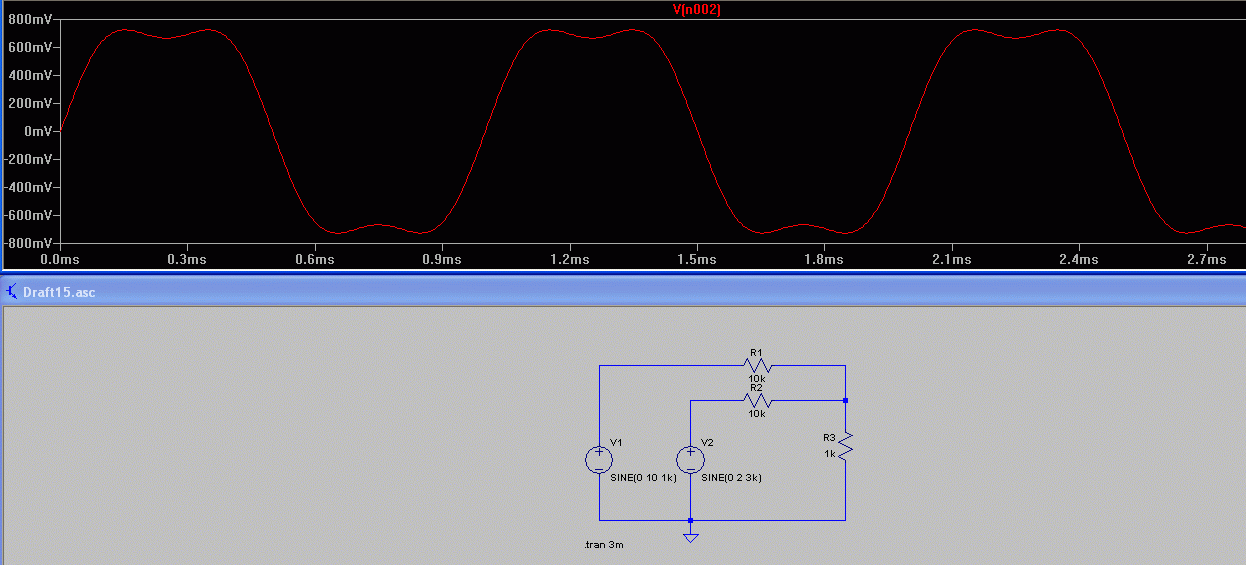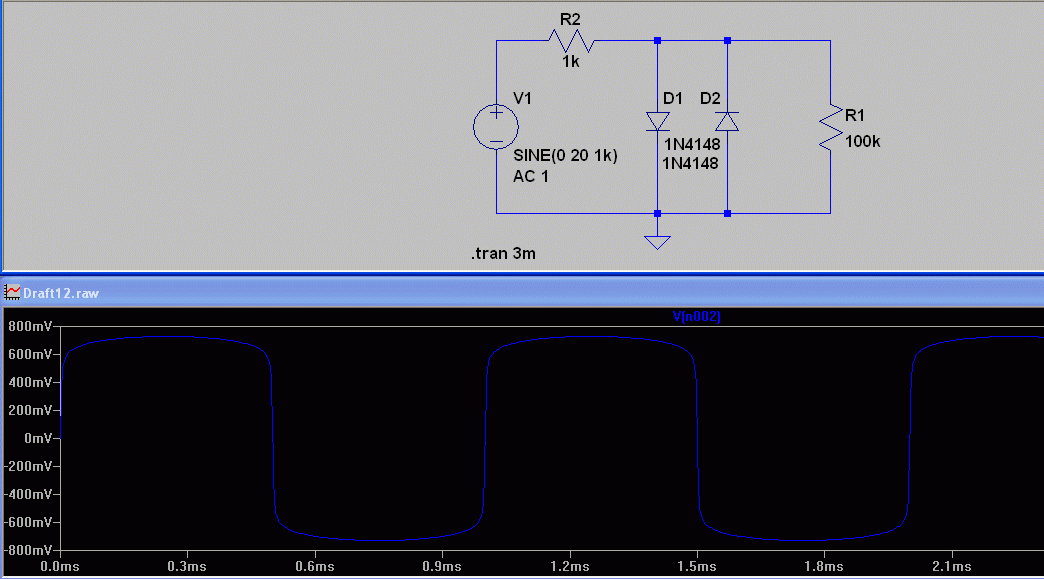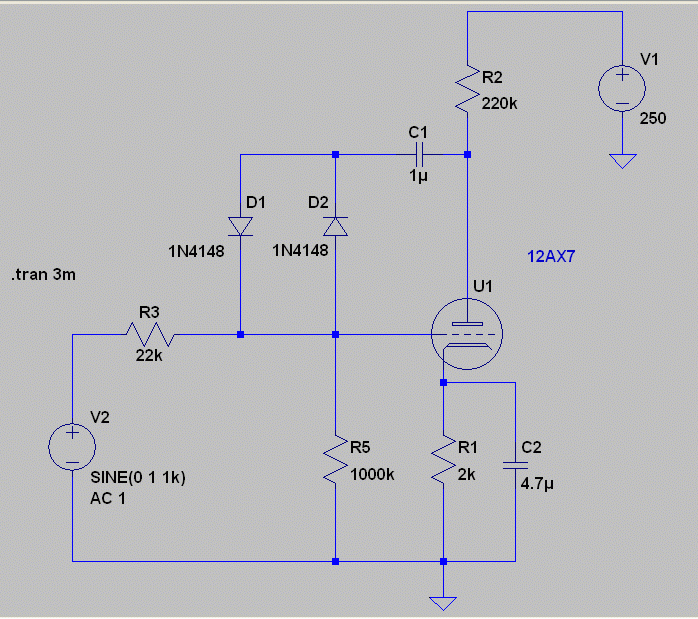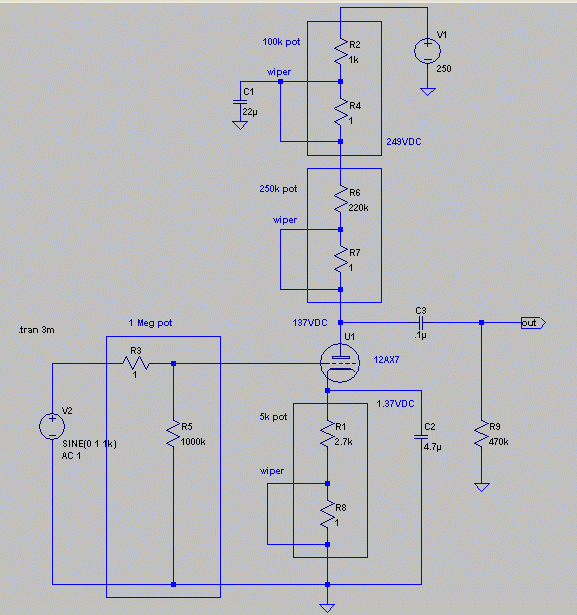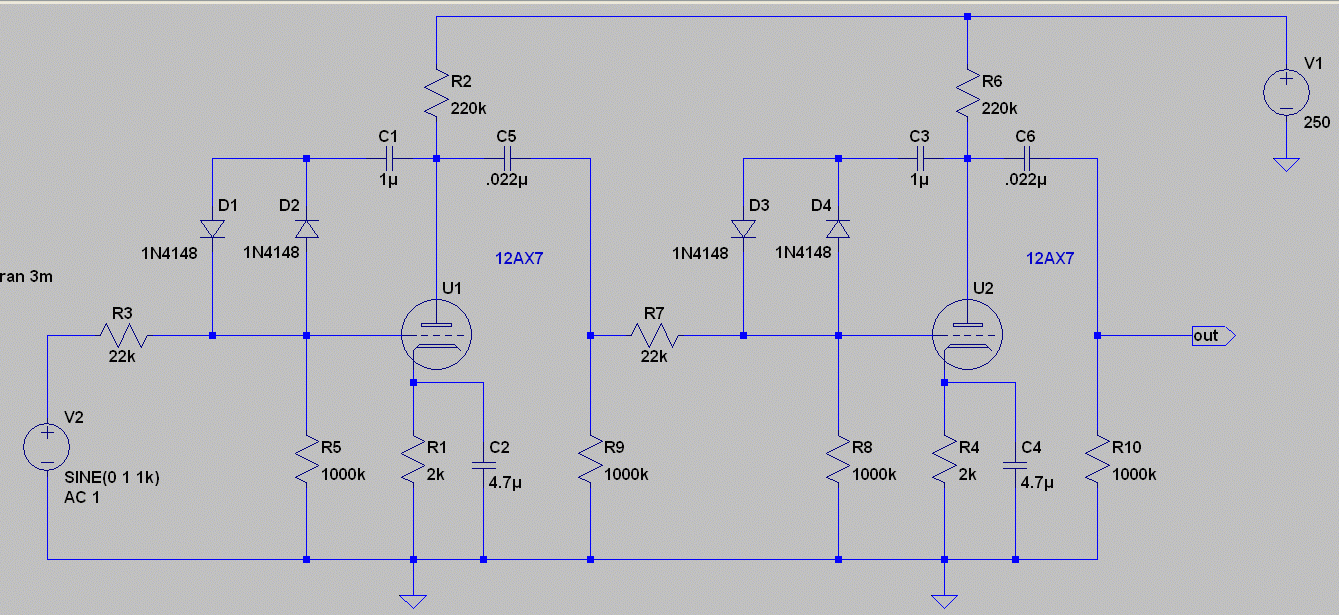all this talk of linear circuits has turned the world a little grey. i need me some color. and not just primary color… chartreuse, cerulean, kaput mortum violet. it’s time to change channels… and not just to “pimp my ride”.
among the diy hifi 1%ers and the ultrafi diaspora, distortion has mainly received a seriously bum rap. yes, some like to give the 2nd order harmonic distortion artifacts an easier time of things, much to the mainstream tradition’s chagrin. most often, distortion measurements are used as a blunt weapon to humiliate, belittle and cajole the errant peers and maladroits of the electronic “sciences”… and of course, as meaningless marketing. there is some older research to back up the lack of importance of even order harmonic distortion in terms of listening. but is it really all that bad. for playback, within reason, i say yes. the whole rationale for hifi hangs in the balance…! but is distortion just inherently bad? as it turns out, for music making, there is almost no amount of distortion too much… in certain quarters, it is the very foundation of musical flavor.
one interesting observation after many years of looking at practical linear circuits: most of the really troublesome analog problems come from switching behavior… interestingly, most of the problems facing digital systems are analog effects. turning on or off is not something any analog device does perfectly. all the devices we use to make digital systems are completely analog at some range. in terms of making electronic distortion, this dualism/factoid has much to offer.
ahh, distortion, oh glorious buzz, crystalline harmonics and angelic glitch! a head full of droned out cranked up amps and i see two opalescent visions of myself, and there’s one rising from each of my shiny boots… and if the melvins, swans (from back in the day, “nobody beats you like a cop, when you’re in jail…”), and cop shoot cop (shine on elizabeth!) don’t wake you tha fuck up to the world of right now, nothing will. maybe you are wondering what the hell i am ranting about?
fundamentally speaking, “distortion” is any deviation from the “original” signal that results from passing through a stage of amplification or other electronic function. obviously most functions create distortion under this definition. just think of a log amp, or an equalizer… the very concept of EQ actually puts passive speaker crossovers into a whole new light: distortion boxes! but most hifi people think only about linear amplifiers. enormous effort goes into making a “transfer system” (having a transfer characteristic) which is in all possible ways equivalent to the input multiplied by the gain (a fixed number). one overlooked issue among many engineers and hackers is that just by using an amplifier, we have given up on this idea, because the time it takes to traverse such a practical transfer system made with the devices we actually have to use. the inertia added makes it impossible. time, all by itself, has a say. the deviation can be admittedly small, and can be rationalized by the tradition as a reasonable “group delay” to be factored in. but i am a fan of honesty in electronics. the more stages, the more complex the demands on the supply, the greater the inertia and delay. but i stray…
in this case, we can do the typical western intellectual division of the universe into two opposite forces (one of them is always implied to be “bad”, without saying so. mind/body, mind/nature, male/female, etc.) and describe the types of distortion as “correlated” or “linear”, and “uncorrelated”. correlated distortions are largely going to be a matter of amplitude and phase (time) variations. simple harmonic distortion comes to mind… all the rest falls neatly into the other category as “non-linear” distortions. some of those are sort of “semi-correlated”, such as inter-modulation distortion (sum and difference) which has roots in the linear stuff. but some stuff is just plain whacko, extra evil gnarly shit and who wants to share space with that? (it’s all a matter of perspective…) however, as it turns out, there are subtle interconnections between the two sides that cannot be totally separated. as is nearly always the case!
an interesting analog question to raise is whether or not there are parallels in the material world to these electronic distortions? the answer is yes absolutely, and no. there are some very obvious comparisons. air, for example, is very compressible. but not linearly so; that is to say, non-linear at small and great magnitudes of compression. the sound of lightning, the thunder clap, is a perfect example of a complex acoustic pulse of large magnitude containing all sorts of linear and non-linear components… all created by rarefying and compressing (and ionizing) air, very suddenly. there are more eloquent people to talk about this than me. the amplitude and phase deviations possible, along with the more complex failure mechanisms, one observes with practical transfer systems can also occur in the natural world. not easy to compete with a thunder clap, though… are there particularly electronic distortions that have no equivalent in the material world? yes. and they are all non-linear. more about this later.
most physical musical instrument sounds are ultimately dependent upon distortion of the fundamental event that generates it, even if the spectral content can include mainly non-linear components as well! think of drums, or bells, and other mallet instruments. the sound they make is fundamentally 2nd harmonic: the strike is heard as a high odd order pulse (which could be very complex if it is a hard stick, or simpler if it is a felt ball) but compresses the air in the column or the material of the piston (might be skin, wood or steel, or…) and damps it. the dimensions of the piston and the speed of sound in the material it is made of, determine the root characteristics, but getting it moving requires energy, which in this case comes only from the mallet. the mallet “stops” the piston during the blow. the release can, and usually is, much greater in magnitude than the blow… this is out of phase with the strike and distorted in amplitude over time… etc. the resonant qualities of the “air column” behind the piston (if there is one) filter or store the energy further, enhancing or attenuating some frequencies at the expense of most others. just trying to describe this in such a simplified way gives one the sense of just how “un” linear the creation of physical sounds is. drums are fairly simple! think of a piano… distortion is very much at the heart of our musical taste and imagination.
what makes distortion “musical” or just plain nasty? let’s keep an open mind about this for the time being… this is a long conversation. however, i can give one important and simple starting point as a reference. the sound of rock and roll (and the blues!), is mainly the sound of 3rd harmonic distortion, in higher or lesser amounts. this is a good place to start because it isn’t as complex as a ring modulator or bit crusher… and many people know what rock and roll guitars, keyboards and vocals are supposed to sound like (?). 3rd harmonic distortion is created in abundance in the crappy output stages of push pull beam tetrodes amps (Fender), and in the overdriving preamplifiers of many other well known musical instrument amps and pedals. below is a graphic for 20% 3rd harmonic… a typical value in a blues guitar sound. this is minus the treble boost, mid cut and bass boost you would also typically want… one step at a time.
so, back to the original question, but now lets ask: how do i do that? well, i am going to describe some of the most basic variations of electronic distortion creation, and suggest gently, as is my wont, what the combinations might beckon… the goal here is primarily 3rd harmonic in character. but if we go a little further… cthulu!
one of the most obvious and brute force electronic distortions is clipping distortion. this is what happens when a signal is, by various means, hard limited in its amplitude. as signal amplitude increases beyond a certain threshold, the “top” and/or “bottom” of the waveform is “clipped off”. this can be done with analog means by using a switch, arranging the bias, the power supply, or the gain of the system to deliberately exceed the linear operating range with the available signal. for example, you can make any linear amp into a clipper simply by sending 100 times the input range into it! a further nuance of this approach is whether or not the onset of clipping is “soft” or “hard”: soft clipping is notable in its slower transition to “clipped”… a gradual rounding over that ultimately results in the limiting value. hard clipping is fast and unambiguous. soft clipping is much more complex sonically, even though hard clipping produces far more odd order harmonics and is brighter. the gooey slewing of soft clipping is an area ripe with variations and subtle differences…
in the image below you see a basic diode clipper… two shunt connected diodes, in reverse, will turn “on” at 600mV (the forward voltage of a 1N4148) or so, “shorting” the signal to the clipping threshold (the forward voltage). with 1 volt pp AC in, there is still some sense of the sinewave visible in the slope of the waveform between the clipped tops and bottoms. in the image below that, that is no longer obvious because the signal level has been increased to 20V pp, and the result is almost a square wave. almost because the top is not perfectly flat! diodes are not apparently perfect switches after all?
one of the simplest ways to improve upon the quality of the switch is to put it in a feedback loop (ahh, the dreaded nfb has already appeared). below, you can see how this would be implemented.
here it is… and below that an image of the waveform. here we don’t have the need to drive the diodes with a large signal (the 12AX7 does that) and the top is flatter, although still not perfectly flat! the small bypass cap and the input “impedance” are also necessary for symmetry. the 12AX7 does need to be loaded well, over the frequency range of interest. additional steps can be taken to “improve” the “fidelity” of the clipping (steeper sides and flatter tops).
this is one simple technique, and kind of a blunt tool at that. with this kind of technique, no matter what the size of the original signal, as long as it exceeds the threshold of the clipper, the output is limited and distorted in a predictable way. it is easy to see the similarity between the ideal 3rd harmonic distorted sine wave and what a clipper can do at modest and overdriven levels. this is classically known in the rock and roll business as “fuzz”
traditional fuzz boxes/diode clippers like the “big muff” or the “octavia” or even the “tube screamer” are all based on this approach. but what about more sensitive techniques? perhaps something that can straddle the linear into the hard clipped? for this, we can look first at deliberately choosing the “wrong” operating point for an active device, so as to create a range where the signal level can determine how clean or distorted the output might be… the bias, DC operating points can be chosen to make this possible. another technique could be to cascade specially designed stages so as to optimize just how “wrong” this can get.
next is a test jig you could make that uses pots to make the bias, loading and B+ all adjustable, simply so you could vary everything and really see what “wrong” can do. immediately you should notice that in the middle, the variations don’t make a huge difference… at the more extreme settings, things get more screwed up.
this can be tried with vocals, guitar or keyboard sources for some interesting effects. remember that more signal conditioning will be necessary to make these sounds useful and able to couple to your other equipment. i am trying to talk fundamentals here.
LT spice doesn’t do pots, so i have drawn them as series connected resistors with the wiper connection between…
a 12AX7 is a good choice for this job because it is high impedance and will only draw 5 mA or so if you turn low the bias, load and B+ pots… it will still cook if you leave it that way, but not much danger to anyone if it burns up. cheap or used 12AX7s are ideal for this treatment. russian 12AX7WAs are perfect. because the 12AX7 is a dual, it is a great opportunity to cascade two identical stages like this for extra sick weirdness. the work isn’t done yet because some housecleaning and eq will be necessary to really get the most out of what different kinds of distortion you can pull out of it. but this could get you started… you can also have another look at the completed distorting preamp i did earlier in the tremolo article, for tips with this.
cascading two FB clippers will also do wonders… here you have the core of a tubed “big Muff” pi, minus the tone control and buffer… i’ll save that for later… the waveform follows…
this was fun. more to come…
